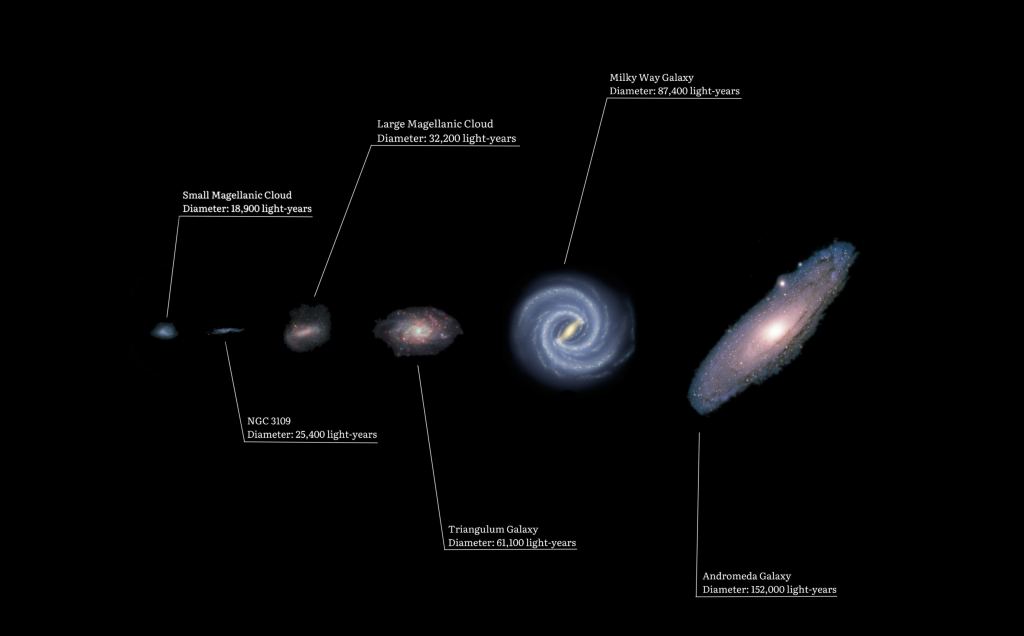The Universe is expanding, and it’s doing so at an ever-increasing pace. Whether due to a dark energy field throughout the cosmos or due to a fundamental of spacetime itself, the cosmos is stretching the space between distant galaxies. But nearby galaxies, those part of our local group, are moving closer together. And how they are falling toward each other could tell us about the nature of cosmic expansion.
One of the things we do know about dark energy is that it isn’t a force. Galaxies aren’t pushing away from each other. Even the most distant galaxies are gravitationally attracted to each other, it’s just that cosmic expansion increases their separation faster than they can fall toward each other. But the amount of cosmic expansion between galaxies depends on their distance. When galaxies are within a few million light-years of each other, then they can fall toward each other faster than expansion. It’s why galaxies huddle into superclusters over time. Local groups of galaxies merge and collide, even though overall the universe continues to expand.
This is the case for our own local group, which consists of the Milky Way Galaxy, Andromeda Galaxy, Triangulum Galaxy, Magellanic clouds, and lots of dwarf galaxies. They are all gravitationally tugging at each other, and will eventually merge to become a large elliptical galaxy. Of course, these galaxies are slowly falling toward each other within an expanding space. This means their rate of approach towards each other is a bit slower than it would be by gravity alone, which is where a new study in The Astrophysical Journal Letters comes in.

The best measurements we have of local group infalling are of our galaxy and the Andromeda Galaxy. We have high-resolution images of the stars in Andromeda. We know the galaxy’s overall motion and mass. We also know the motion and mass of our own galaxy. With that, we can calculate the rate of gravitational acceleration between the two galaxies, and we can compare it to the observed acceleration. The uncertainties between the two overlap, so it isn’t precise enough to measure dark energy directly, but it is enough to put an upper bound on the amount of dark energy in our local group.
From the Andromeda data, the team calculated an upper bound about 5 times greater than the value for dark energy measured by the Planck satellite. In other words, the value for dark energy seen in the cosmic microwave background is well within the range allowed by this new study, which isn’t surprising. But this is just a first step. With observations of other members of the local group, the team estimates they can lower the upper bound to around 1.7 times the Planck value.
That might not seem useful at first glance, but it would be a strong enough constraint to rule out some alternative models. In general relativity, dark energy is predicted to be uniform throughout the cosmos. Some alternatives predict that dark energy correlates with galactic clusters, meaning that local dark energy levels should be higher than the overall average measured by Planck.
Dark energy will still be a mystery for a while, but this study shows that we don’t just need to look at the most distant galaxies to understand it. We can also look at the galaxies in our own backyard.
Reference: Benisty, David, Anne-Christine Davis, and N. Wyn Evans. “Constraining Dark Energy from the Local Group Dynamics.” The Astrophysical Journal Letters 953.1 (2023): L2.
The post We Might Be Able to Measure Dark Energy Through the Milky Way's Collision With Andromeda appeared first on Universe Today.
No comments:
Post a Comment